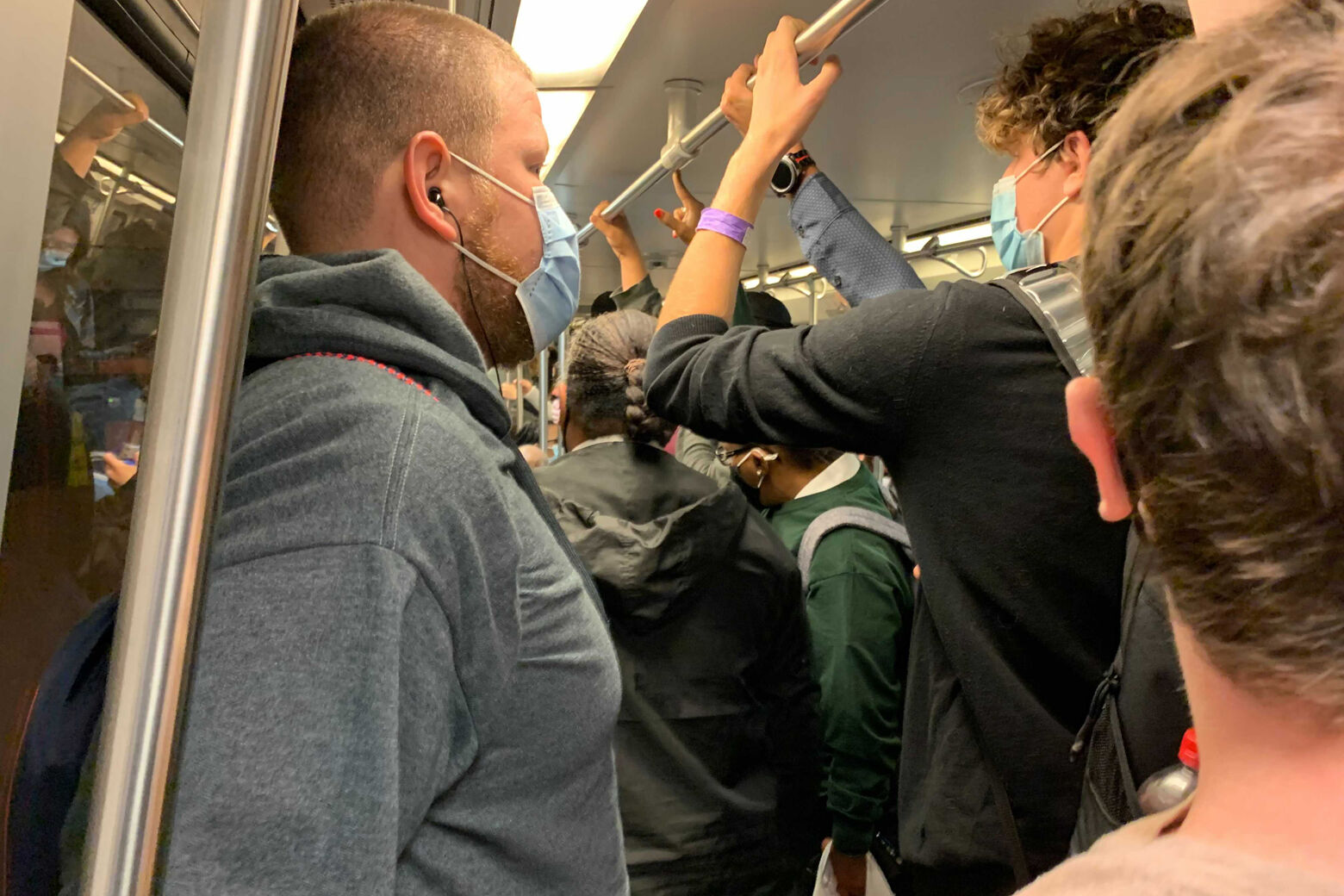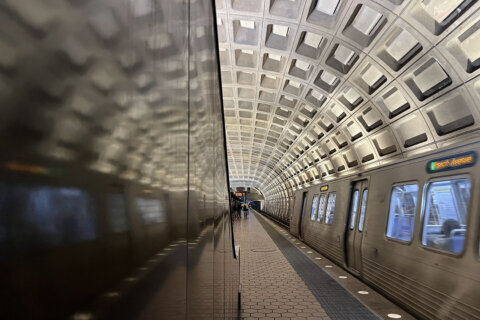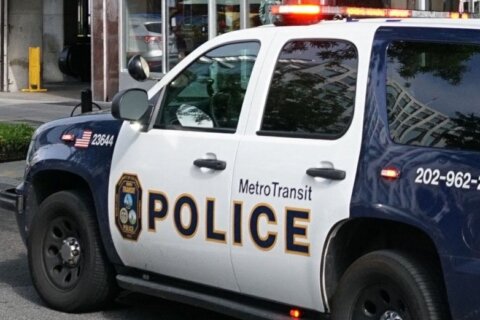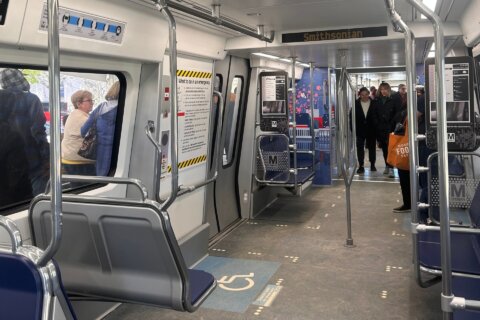Metrorail’s reduced service pattern will continue through the weekend as investigators probe the derailment of a 7000-series Blue Line car.
The rapid transit system has cut train frequency through at least Sunday after pulling its 7000-series cars from service on orders from its safety watchdog. Frustrated passengers encountered long waits and crowded platforms during peak hours Monday with one rider describing his evening commute as “like a nightmare.”
Trains will arrive every 30 to 40 minutes on the Blue, Yellow, Orange, Silver and Green lines under what Metro has termed a basic service pattern. The Red Line will run every 15 to 20 minutes. The Silver Line will operate between Wiehle-Reston East and Federal Center SW only.
“There is currently no capacity to fill unforeseen gaps, which will result in longer wait times,” Metro said in a statement Tuesday evening.
Walking into the New Carrollton Metro station Tuesday morning, WTOP’s John Domen reported Orange Line delays of up to 40 minutes at times, and found riders taking their chances with lengthy waits again after a difficult Monday.
“If I knew it was going to be 25 minutes, I would’ve sat (at home) or something,” one rider said after missing a train at New Carrollton by five minutes with no alternative to waiting for the next one. “There’s nothing to do except put my earphones on and listen to some music, I guess.”
I’m at the New Carrollton Metro station this morning for @WTOP and you know that one day service slow down for inspections yesterday? Turns out it’ll run alllll week now. pic.twitter.com/nfpzOyUonU
— John Domen (@JDDsays) October 19, 2021
All trains are limited to six cars each of Metro’s older models after the more modern 7000 series, which constitutes over 60% of the system’s fleet of rolling stock, were parked for inspection effective Monday morning.
Fewer trains on the track meant many Monday commuters faced cramped conditions at downtown station platforms. Metro tweeted that it had made a “concerted effort” to improve airflow after riders voiced concern over an inability to remain safely spaced apart in packed rail cars.
“People have to get to work, so they do what they’ve got to do,” another rider said. “I noticed yesterday that for the first time, people actually sat next to me in a train … that hasn’t happened in a long time, so it was very weird.”
Commuters are encouraged to seek alternatives whenever possible, including Metrobus or telework. Drivers could see more traffic than usual on the region’s major roadways during rush hour and should make for extra travel time.
Get the latest on mass transit and traffic at WTOP’s traffic page or listen to updates every 10 minutes online or on the air at 103.5 FM.

The National Transportation Safety Board said Monday that its initial findings revealed a 7000-series Blue Line railcar had shifted off the track at least twice before ultimately derailing between Rosslyn and Arlington Cemetery stations and stranding around 200 passengers in a dark tunnel.
A preliminary investigation detected a flaw in the car’s wheel gauge assembly that had led to its wheels shifting too far apart on their axles. In a round of emergency inspections that began Friday, Metro found at least 21 similar defects on 7000-series cars assembled in Nebraska by the Japan-based Kawasaki Rail Car Company and placed into service starting 2015.
Federal officials were later informed by Metro of similar problems with 7000-series cars dating back to 2017. Two failures were reported in 2017 and 2018 each; inspections turned up four and five failures in 2019 and 2020, respectively. Eighteen failures were reported in 2021 prior to Tuesday’s Blue Line derailment and the emergency inspections it triggered.
In a news conference Monday, NTSB Chair Jennifer Homendy said the agency first learned of the wheel problems as a result of the current investigation and supported the Washington Metrorail Safety Commission’s move temporarily taking the 7000 series out of service, noting the growing number of failures.
“We are fortunate that no fatalities or serious injuries occurred as a result of any of these derailments, but the potential for fatalities and serious injuries was significant,” Homendy said, adding that the defect “could have resulted in a catastrophic event.”
Metro said it would work with the safety commission, federal authorities and manufacturer Kawasaki to determine the “next best steps for returning the 7000 series to service,” stating on its website that the rail cars will not make a return “until they are deemed safe.”
Salim Furth, a senior research fellow at George Mason University’s Mercatus Center, sees relying on Metro’s older cars as a big risk and urged the region’s employers and local officials to prepare for more extensive delays if the repairs aren’t as simple as everyone hopes.
“We don’t know long it’s going to be until Metro can put trains back in service,” Furth said, adding that adding more dedicated bus lanes to busy roads would help alleviate future, long-term Metro reductions.
“The main thing is for leaders in all these different jurisdictions to start planning now, just in case the worst happens,” he said. “Not everyone can just say, ‘oh yeah, the Metro is bad today, guess I’m working from home,’ that’s just not an option.”
WTOP’s Jack Moore contributed to this report; John Domen reported from New Carrollton, Maryland.








